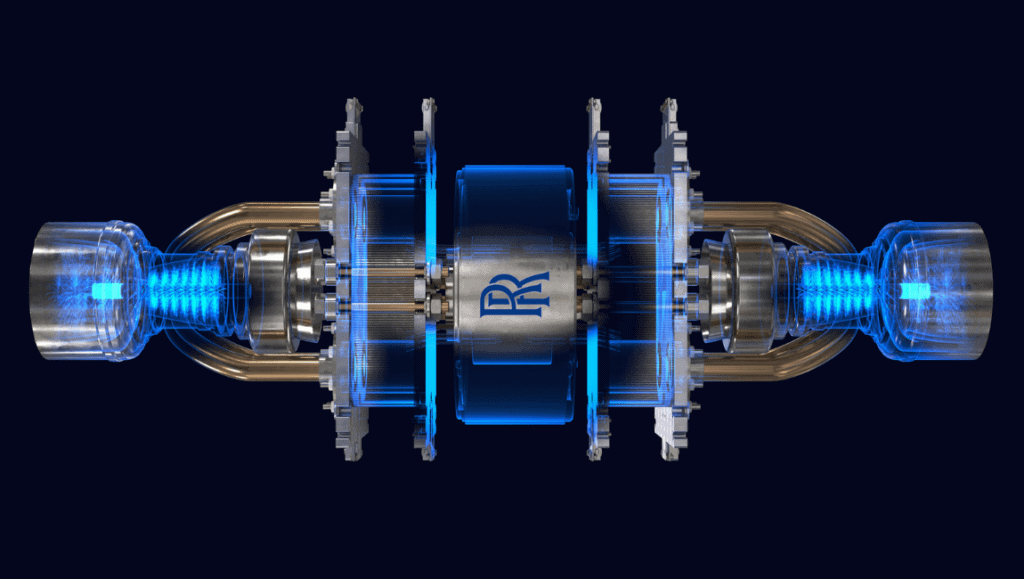Rolls Royce plans ‘120-inch-long’ mini nuclear reactor
Rolls-Royce has unveiled a conceptual model design of a nuclear Space Micro-Reactor that may one day supply electricity for a lunar settlement.
This tech prototype was presented at the UK Space Conference held in Belfast last week.
Some regions of the Moon’s southern pole have remained untouched by sunlight for billions of years, making them incredibly hostile.
Despite these challenges, NASA has identified this region as a prime candidate for establishing the first lunar outpost.
One big rationale behind this choice is the potential for vast water deposits within the perpetually shadowed areas.
Astronauts will need a steady power supply to survive and enable operations near the South Pole or any other lunar location.
Due to the unavailability of solar energy as a dependable source, there is a high need for a nuclear power plant on the Moon for successful settlement.
“This innovative research by Rolls-Royce could lay the groundwork for powering continuous human presence on the Moon,” said Paul Bate, chief executive of the UK Space Agency, in an official release.
Nuclear power unfazed by lack of sunlight
The technology giant received funding of £2.9 million from the UK Space Agency in March 2023. It was awarded to support its research on the feasibility of establishing nuclear power to run the future lunar outpost.
At the conference, Rolls-Royce displayed a prototype of this mini reactor, which is currently incapable of producing power.
Rolls-Royce engineers and scientists are currently engaged in exploring ways to convert the heat produced by the nuclear fission reactor into energy.
This small and lightweight nuclear reactor would remain unfazed by the absence of sunlight on the Moon, making it ideal for the outpost located inside a dark crater at the south pole.
The tiny reactor, which is claimed to be 3.3 feet (40 inches) in width and 10 feet (120 inches) in length, is not yet able to generate any electricity. If all goes as planned, it will take roughly six years and several million dollars to prepare the reactor for its first space flight.
The reactor is supposed to generate energy using nuclear fission, the same mechanism that terrestrial nuclear power plants employ.
The splitting of atoms, such as uranium, produces energy in a nuclear fission reactor.
Unlike solar panels, which rely on sunlight, fission reactors can create a constant power source and can be strategically positioned on the polar surface.
Rolls-Royce aims to create a functional reactor by 2030
A constant supply of energy at the base camp would make it easier to run the ventilation and heating systems required for astronaut survival.
Moreover, the constant power source is crucial for sustained operations, including the recharging of rovers and other scientific instruments for lunar exploration.
By the early 2030s, the company hopes to have the reactor ready for deployment on the Moon.
According to the press statement, the micro-reactor may also provide power and propulsion for spacecraft. Furthermore, on Earth, this technology might help to achieve net-zero objectives and reduce greenhouse gas emissions.
“Micro-Reactor technology will deliver the capability to support commercial and defense use cases alongside providing a solution to decarbonize industry and provide clean, safe and reliable energy,” said Abi Clayton, Director of Future Programmes for Rolls-Royce.
The next step is to turn the concept of a nuclear reactor on the Moon into a reality for future astronaut colonies.
“This could be also a stepping stone to develop the technology and the experience for Rolls-Royce that we could then take to Mars,” Todd Tofil, the Fission Surface Power project manager at NASA’s Glenn Research Center, told BI in 2022.
Also Read : Sam Altman says being fired from OpenAI was a ‘blessing in disguise’, despite ‘painful cost’ in for 2024?

